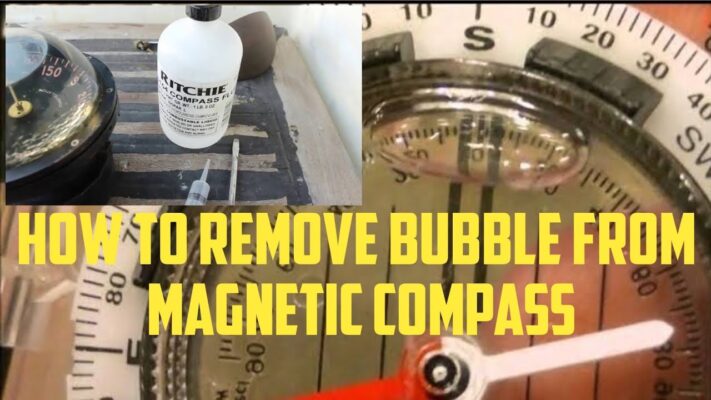Magnetic Compass Air Bubble Removal on Board Vessel
The magnetic compass is still one of the most trusted tools used for navigation on ships. Even with advanced GPS and gyrocompasses, this tool is essential for backup and accuracy. One common issue is the formation of air bubbles in the compass bowl. These bubbles can affect accuracy. In this guide, SEANAV explains how to remove air bubbles and keep your compass working smoothly.
Why Do Air Bubbles Form in the Magnetic Compass?
Air bubbles can appear for several reasons. For example:
- Extreme temperatures can cause the fluid to evaporate.
- Sealing gaskets may wear out or get damaged.
- Improper fluid refilling during earlier service visits.
- Vibrations or shocks from rough seas or engine movements.
How Air Bubbles Affect the Magnetic Compass
Even small bubbles can cause serious problems. Here are a few effects:
- They can shift the compass card, causing wrong readings.
- The card may move slowly or get stuck.
- The damping system loses effectiveness.
- Over time, parts inside the compass might get damaged.

How to Remove Air Bubbles from a Magnetic Compass
Follow these simple steps:
- Find the filling plug on the compass. It is usually on the top or side.
- Make sure the ship is steady and the weather is calm.
- Use a flat-head screwdriver to open the plug.
- Use only the correct compass fluid, such as mineral oil or alcohol-based fluid.
- Slowly pour the fluid until the bubble disappears.
- Check for leaks or cracks in the housing or seal.
- Close the plug tightly to prevent future leaks.
- Clean up any spilled fluid and check compass card movement.
Safety and Maintenance Tips
Always follow these tips to stay safe and protect your compass:
- Only use the recommended fluid from the manufacturer.
- Do not overfill. Too much pressure can cause damage.
- Wear gloves and safety glasses when handling fluid.
- Dispose of old fluid in a safe and eco-friendly way.
Frequently Asked Questions (FAQ)
1. Why is removing air bubbles important?
Because they affect the compass readings and cause navigational errors.
2. What kind of fluid should I use?
You should use mineral compass oil or alcohol-water mix, as recommended by the manufacturer.
3. How often should I check the magnetic compass?
Check it during every watch and after rough sea voyages.
4. Can I refill it myself?
Yes, if you follow safety steps. Otherwise, contact SEANAV for support.
5. Why does the fluid evaporate?
It evaporates due to heat or damaged sealing components.
6. How can I stop air bubbles from forming again?
By doing regular inspections, sealing leaks, and keeping it away from direct heat.
7. What happens if I ignore the bubbles?
You might face wrong compass readings, which could lead to navigation errors.
8. Do digital compasses face this issue?
No, digital compasses are electronic. They don’t use fluid but still need checks.
9. Can a leaking compass be fixed?
Yes, small leaks can be sealed. If the damage is severe, replacement may be needed.
10. How much fluid should I add?
Just enough to remove the bubble and reach the fill line.
11. What tools are needed?
You’ll need a screwdriver, funnel, compass fluid, and a clean cloth.
Conclusion
Removing air bubbles from a magnetic compass is a simple but important task. It keeps your navigation safe and reliable. With SEANAV’s expert service team, you can count on professional support anytime, anywhere. Our team handles compass repairs, fluid refills, and full bridge equipment checks.

